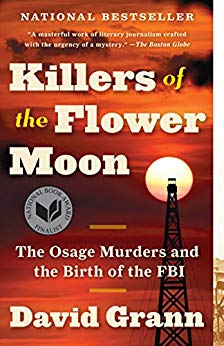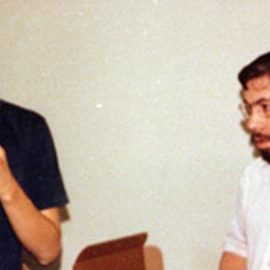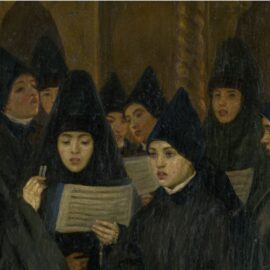

This article is an excerpt from the Shortform summary of "Killers of the Flower Moon" by David Grann. Shortform has the world's best summaries of books you should be reading.
Like this article? Sign up for a free trial here .
Who was Asa Kirby? What role did he play in the Osage murders, and what happened to him?
Asa Kirby was an outlaw and an explosives expert who was responsible for the explosion that killed Bill and Rita Smith. However, before he was able to confess to the murders or offer additional information, Asa Kirby died, along with an associate, Henry Grammer, who was also involved in the murders.
Continue reading to learn about Asa Kirby and the Osage murders in 1920s Oklahoma.
Asa Kirby: Hired Killer
Let’s look at the background of Asa Kirby’s involvement in the Osage murders. Through a local attorney, investigator Tom White arranged a meeting with the stickup man Dick Gregg, known as a member of the fearsome Al Spencer gang. At that time, Gregg was serving a sentence in a Kansas penitentiary for armed robbery. Gregg agreed to meet with White and share what he knew, in exchange for a possible sentence reduction.
At his meeting with White, Gregg revealed that Hale had paid the Spencer gang $2,000 to murder Bill and Rita Smith. Gregg claimed that he had refused this assignment, deeming the contract killing of a woman to be dishonorable, even by outlaw standards. He also mentioned the name of another associate, Curley Johnson, who had knowledge of the Smith slayings. But Johnson, White learned, had died—apparently of alcohol poisoning, though it was quite possible he had been another victim of the Reign of Terror. Another potential witness, the bootlegger Henry Grammer, with whom Hale had been overheard talking about the conspiracy, had died in a car accident in June 1923.
Through another informant, White discovered that an outlaw named Asa Kirby had been responsible for rigging the charges that killed Bill and Rita. But Asa Kirby was also unable to testify. Two weeks after Grammer’s death, he had been killed by a store owner during an attempted burglary. It came as no surprise to White to learn who had tipped off the store owner about the break-in—William Hale.
The conspiracy was eating its own. It was clear that Hale was systematically killing anyone who had been involved in the Osage murders and might be able to implicate him.
The Trial
In his quest to shore up the case, White turned to the man who had caused so much grief and embarrassment for the Bureau during its original investigation: the outlaw Blackie Thompson. Blackie Thompson had been released from prison by the Bureau in 1923 to work undercover and help solve the Osage murders. Instead, Blackie had gone on a criminal rampage, robbing a bank and slaying a police officer. By 1926, he was back in prison.
But White suspected that, for all his misdeeds and the Bureau’s disastrous bungling, Blackie really did have valuable information. So he arranged to have Blackie transferred to the federal prison in Guthrie, Oklahoma where he could be interrogated. White’s team told Blackie that his cooperation would not result in any reduction of his current prison sentence—thus, eliminating much of the convict’s incentive to lie. Upon questioning, Blackie revealed to federal agents that Hale and Burkhart had engaged him and the now-deceased Curley Johnson to murder Bill and Rita Smith. The only reason Blackie had never gone through with it was that he had been arrested and imprisoned for car theft before he had the chance to participate in the plot.
The agents used Blackie’s account to break Ernest Burkhart. They dramatically brought the two together in a room at the jail where Burkhart was being held, where Blackie told Ernest that he had shared everything he knew with the agents. Ernest was clearly scared and defeated. He finally confessed to White, admitting that Hale had tasked him with recruiting the operatives to blow up the Smith house. Burkhart said that Asa Kirby (recruited through the bootlegger Henry Grammer) had actually made the bomb and ignited the fuse, not Burt Lawson—Lawson, like so many jailhouse informants throughout the case, likely in the hopes of getting his sentence reduced. He also revealed that Hale had traveled with Grammer to Texas on the day of the bombing, with the express purpose of manufacturing an alibi.
Ernest also linked Hale directly to the murder of Henry Roan, stating that a contract killer named John Ramsey (another associate of Grammer) had been hired to kill him. Agents in the field immediately apprehended Ramsey, brought him into custody, and presented him with Burkhart’s signed confession. Ramsey, in turn, confessed to getting Roan drunk and shooting him in the back of the head.
Ernest Burkhart also admitted to hiring Asa Kirby. On June 9, 1926, he notified the prosecutors that he wished to change his plea again, this time to “guilty.” He read a statement before the judge and jury that he had, in fact, hired Asa Kirby to blow up Rita and Bill Smith’s house.

———End of Preview———
Like what you just read? Read the rest of the world's best summary of David Grann's "Killers of the Flower Moon" at Shortform .
Here's what you'll find in our full Killers of the Flower Moon summary :
- How the Osage tribe had vast oil wealth, but had it seized by their murderous neighbors
- The brutal and unresolved murders of Osage Native Americans
- The complicated history of the FBI in profiting from the Osage murders






